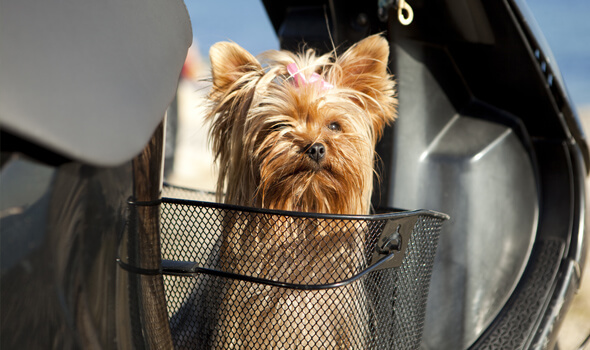
Medial Patellar Luxation Repair
Patellar luxation occurs when a dog’s kneecap slips out of its proper position and becomes unable to fully glide down the groove of the femur. A medial patellar luxation (MPL), the most common type, occurs when a pet’s kneecap slides to the inside of the knee. This is normally caused by a congenital abnormality like a misshapen femur or tibia, shallow femoral groove or hip dysplasia, or as a result of knee trauma. Small breeds are especially prone to MPL, but it can occur in larger dogs as well.
If left untreated, medial patellar luxations can result in osteoarthritis, cartilage damage and ligament tears.
Medial patellar luxations are graded according to severity and frequency of displacement:
Grade I: Occasional patella displacement, but remains in the groove the majority of time. Symptoms may include skipping or kicking out of the leg.
Grade II: Frequent patella displacement characterized by a persistent skipping gait and a mild degree of lameness; patella can be manipulated back into the groove.
Grade III: Patella is always displaced, frequent lameness; patella can be manipulated into the groove but will pop out immediately.
Grade IV: Patella is always displaced and cannot be manipulated back into the groove, constant lameness, signs of physical deformity and a bow-legged appearance. The knee cannot be extended.
Diagnosing and Treating Medial Patellar Luxation
At Bear Valley Veterinary Care Center, we often discover patellar luxations during pets’ annual wellness exams and other general examinations. If an MPL is suspected, your Bear Valley veterinarian will examine your pet’s knee for signs of displacement and will use a radiograph to confirm the diagnosis.
Surgery is recommended to treat MPL grades III and IV as well as select grade II cases. The procedure realigns the patella by deepening the femoral groove, altering the alignment of the patellar ligament, adjusting the leg bones and fixing the joint attachments. For all MPL grades, weight management is an important component of the treatment process. Obesity puts undue strain on the knee, creating and exacerbating joint issues. Helping pets achieve a healthy weight further reduces ligament stress and helps stabilize the knee.
Recovering from Medial Patellar Luxation Repair
Medial patellar luxation repair is a major surgery that requires a 12-week recovery period. Your Bear Valley veterinarian will likely prescribe pain medication, anti-inflammatory medications, laser therapy and antibiotics to minimize discomfort and prevent infection during recovery.
Your dog’s mobility should be restricted during recovery. Limit exercise to short walks for the first six weeks, then gradually increase exercise length weekly until your pet is back to full strength.
Schedule a consultation with a veterinary orthopedic surgeon at Bear Valley Veterinary Care Center.